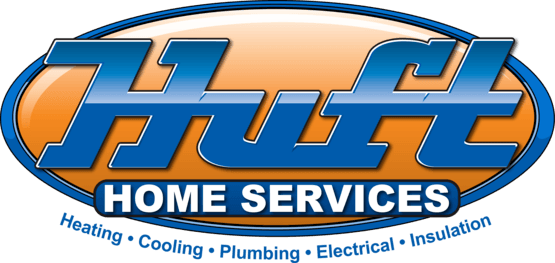When the air turns crisp, your HVAC system shifts from long cooling days to shorter, steady, safe heating runs. Fall heating maintenance helps that handoff go smoothly, especially after a dry summer that leaves dust in filters, blower wheels, and ducts. Huft Home Services in Sacramento, CA, helps homeowners plan maintenance before the busy season.
Why Fall Maintenance Matters in a Dry, Mild Climate
Dry summers load your HVAC with fine dust even when windows stay shut. That film settles on the blower wheel, burner area, and indoor coil. Mild autumn days can mask weak starts and short cycling.
A fall check brings those faults to light while demand stays low. A technician cleans the flame sensor, confirms ignition timing, and verifies draft. Heat and age stiffen small gaskets and rubber tubes, so pressure switch lines, condensate lines on high efficiency models, and cabinet seals get inspected and reset to prevent nuisance lockouts when nights turn cooler.
Airflow First: Filters, Returns, and Room Pathways
Your furnace needs clear paths in and out. California’s Title 24 standards also require that airflow measurement apparatuses used in homes be certified to ensure accurate readings. Return air matters as much as supply. If a return grille sits behind a sofa or rug, the blower pulls from gaps it should not, warming the supply plenum and starving rooms.
Interior doors shape circulation, too. Tight doors with small undercuts trap air in bedrooms and starve the return path. Leave a finger-width gap under doors or add a transfer grille. Aim supply registers across rooms, not into curtains or furniture, so each cycle moves heat where people sit and sleep.
Gas Furnace Safety: Combustion, Venting, and Sensors
Clean ignition and correct fuel flow keep flames stable. A sensor coated with white residue sends a weak signal, so the burner lights, drops out, then relights. Cleaning restores steady detection. Gas pressure should match the rating plate, not a guess.
A manometer reading confirms the valve delivers the right flow for hot, even flames with minimal soot. As recommended by city and utility safety guides in California, have a qualified professional perform annual checks to inspect burner compartments, flame appearance, and clearance around the furnace. Venting gets a close look in the fall. Birds, insects, and summer projects near the termination leave partial blockages that do not show on short calls. Longer winter runs demand a clear path. The flue should rise with proper slope, joints should sit tight, and hangers should be secure so that exhaust leaves the house every time.
Heat Pumps and Dual-Fuel Systems: Fall Checks That Matter
If you heat with a heat pump, schedule a fall check before nights turn cold. Confirm that defrost works, the reversing valve moves, and the refrigerant level is correct. Short mild-weather cycles can hide a low charge or a sticky valve.
When frost forms on the outdoor coil, the unit should switch to defrost based on its control settings; a bad sensor can let frost build and choke airflow. The outdoor coil also traps cottonwood, grass, and dust, so a gentle rinse restores heat transfer and quiets the fan. Inside, electric heat strips or a furnace should help only when needed.
Indoor Air Quality After a Dusty Summer
Heat lifts settled dust on the first runs of fall. Wipe supply registers and return grilles to prevent shedding particles when the blower starts. Aim for steady, moderate humidity rather than quick spikes once the furnace runs. Rapid swings invite window condensation and leave mineral lines at supply boots. If you use a whole-home humidifier, check the pad, feed, and drain in fall so that water stays where it belongs.
Electrical and Mechanical Details That Prevent Breakdowns
Loose connections and tired parts often show up during the first weeks of heating. Vibration through a long cooling season can loosen panel screws and small control terminals. Tightening those points in the fall prevents arcing and intermittent faults.
The blower wheel should be clean and balanced so that amp draw stays in range and motor windings run cooler. If your system uses capacitors on the blower or inducer, values need to sit within spec so motors start cleanly. Inducer assemblies get checked for bearing noise and clear ports to the pressure switch. Hot surface igniters get a resistance check so that they do not crack on the first long run.
Ducts in Attics and Crawlspaces: Fall Is the Time to Tighten Up
Ducts outside the conditioned space leak heat fast. Joints at the plenum, takeoff seams, and flexible duct collars loosen with heat and movement. A fall leakage test flags trouble, so a follow-up seals joints with mastic and the right collars. Insulation around runs should sit intact and dry. Compressed or slipped wrap invites losses on the way to the register.
Long, flexible runs need straight support and smooth bends. Kinks and sharp turns add resistance and rob distant rooms. Balancing near the plenum shifts flow to rooms that cool off first after sunset. Straighter, tighter ducts cut runtime and reduce dust pulled from unconditioned spaces when the blower starts.
Hydronic and Radiant Heat: Quick Autumn Checks
If you use hydronic baseboards or radiant floors, clear the water side before the season. Air pockets reduce heat transfer and make pumps work harder. Bleed radiators or use purge valves at the manifold so that water moves freely. Expansion tanks should hold the right pre-charge. Circulator pumps need a quiet spin-up without grinding or rattling.
Where radiant floors meet new coverings, make sure carpet pads and rugs still allow heat to rise. These small checks keep mixed systems smooth when furnace and hydronic zones trade calls through the evening.
Carbon Monoxide and Safety Devices
Any system that burns fuel should pair with working carbon monoxide alarms. Fall is the time to check dates and test buttons. Alarms lose sensitivity as they age, so units past their marked date need replacement. For added safety, a pro can measure carbon monoxide in the flue during a heat call and compare readings to accepted limits.
That test confirms proper mixing of fuel and air and catches misaligned burners or blocked secondary exchangers. Smoke alarms deserve fresh batteries at the same time, and linked alarms should be tested so that a single trigger alerts the whole group.
Water Management for High-Efficiency Furnaces
Condensing models pull heat from exhaust and make water that must drain freely. In fall, clean the trap, re-hang hoses with a steady slope, and cycle the condensate pump if present. Algae and fine grit from summer can build small dams that do not show during short calls. Once winter runs get longer, a slow drain causes water to pool and trips a pressure fault.
What a Professional Maintenance Visit Covers
A professional visit sets a baseline and confirms safe operation. A technician documents readings you can track year to year: static pressure across the cabinet, temperature rise across the exchanger, manifold gas pressure, flame sensor microamps, blower and inducer amperage, and capacitor microfarads.
Check out our Huft Protection Plan >>>
They check control timing through a full call for heat to confirm smooth ignition and stable flame, then verify vent draft and make-up air. On high-efficiency units, they record condensate flow and verify pump operation. These procedures help ensure compliance with the Sacramento County Mechanical Code, which mandates safe operation, ventilation, and condensate drainage standards for forced‐air and fuel-burning appliances. Any out-of-range number becomes a clear action item with parts and labour noted, so you leave with a short list, not guesswork. Those records help spot trends early, plan replacements on your schedule, and keep winter bills steady.
Book Your HVAC Maintenance Visit Today
Fall heating maintenance in a dry, mild climate focuses on small details that add up to steady comfort and lower winter bills. A short visit can clear dust from the blower, test safety controls, set gas pressure, and confirm venting, which keeps your system reliable when nights cool down. For a friendly, no-pressure appointment that fits your schedule, book your heating service with Huft Home Services.




